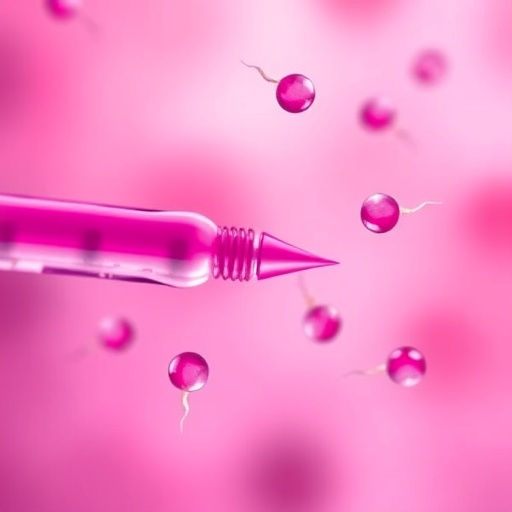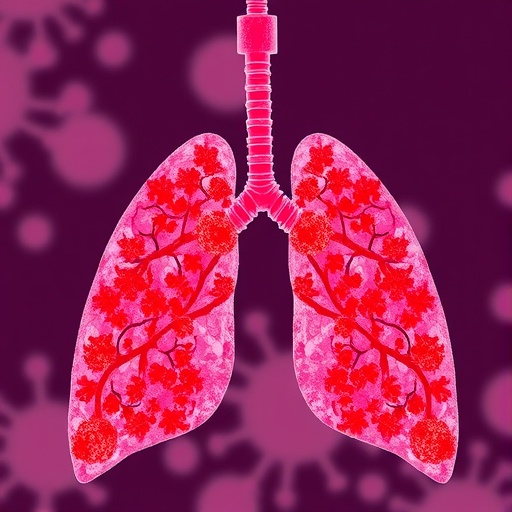In a groundbreaking study published in Reproductive Sciences, researchers Yentur, Dusunus, and Canitez delve into an innovative approach aimed at enhancing outcomes in assisted reproductive technologies (ART). Their research offers promising insights into the role of platelet-rich plasma (PRP) in improving sperm motility, a critical factor in male fertility. The application of PRP, a treatment derived from the patient’s own blood, has been widely recognized for its beneficial effects in various medical fields, but its potential in reproductive health is just beginning to be uncovered.
Sperm motility is one of the key determinants of male fertility, influencing the ability of sperm to effectively reach and fertilize an egg. Various factors, including lifestyle choices, environmental influences, and medical conditions, can adversely affect sperm motility. Traditional ART methods, such as in vitro fertilization (IVF), often face challenges due to these issues. As such, enhancing sperm motility through novel therapies is a critical area of research in reproductive medicine.
Platelet-rich plasma therapy has gained traction for its regenerative properties, attributed to the high concentration of growth factors and cytokines found in the platelets. By leveraging the body’s own healing capabilities, PRP therapy promotes tissue regeneration and healing in various contexts. In this latest research, the authors explore how these properties might translate into improvements in sperm function and viability, offering men struggling with infertility a new avenue to explore.
The researchers conducted a series of experiments to assess the effects of PRP on human sperm motility. The methodology was meticulously designed to ensure that all variables were accounted for, with a focus on isolating the impact of PRP on sperm cells. The study involved collecting sperm samples and subjecting them to treatment with various concentrations of PRP, followed by comprehensive analysis to evaluate motility, vitality, and other critical parameters.
Results from the study reveal a significant enhancement in sperm motility indices amongst samples treated with PRP compared to control samples. This breakthrough finding suggests that the factors embedded within platelet-rich plasma can stimulate sperm activity, potentially leading to improved outcomes in assisted reproductive procedures. The implications of these results are profound, as many men face challenges related to sperm motility, thereby affecting their chances of conception.
What sets this research apart is not only the innovative application of PRP but also the scientific rigor with which the studies were conducted. Through careful data collection and analysis, the authors provide robust evidence that could herald a new era in the treatment of male infertility. This could potentially shift the paradigm of how ART is approached and administered, particularly for patients with low sperm motility.
Furthermore, the long-term impact of PRP treatment on sperm quality remains an essential aspect of ongoing research. While immediate results demonstrate significant improvements, understanding the durability of these effects will be vital for integrating PRP therapy into standard clinical practice. Future studies will need to focus on the mechanisms by which PRP exerts its influence on sperm function, identifying the specific growth factors and biological pathways involved.
The findings from this study also raise questions about the broader implications for male fertility treatments. If PRP can be demonstrated to not only improve motility but also enhance overall sperm health, it may become a staple in fertility clinics worldwide. This would represent a paradigm shift in how male infertility is treated, offering new hope to couples facing challenges in conception.
The research team’s findings suggest an optimistic future for the integration of PRP therapy into the fertility treatment landscape. As a non-invasive and potentially cost-effective option, it could serve as a complement to existing ART techniques, enhancing the success rates of procedures such as IVF and intracytoplasmic sperm injection (ICSI). For many couples, this could mean a significant reduction in the emotional and financial stress associated with infertility treatments.
Moreover, PRP therapy aligns with a broader trend in medicine that emphasizes regenerative treatments, utilizing the body’s innate healing processes to address health concerns. As such, this research not only contributes to the field of reproductive medicine but also underscores the potential for regenerative therapies across various medical disciplines.
Continued exploration into PRP’s applications in infertility will be essential, particularly as researchers work to refine techniques and protocols. Establishing standardized treatment guidelines will be vital for effectively integrating PRP into clinical practice, ensuring that patients receive optimal care. The pathway to clinical application will require rigorous clinical trials and peer-reviewed studies, ensuring that all safety and efficacy concerns are thoroughly addressed.
This pioneering study has broadened the conversation about male fertility and the possibilities afforded by innovative treatments like PRP. As awareness of male reproductive health continues to grow, the stigma surrounding infertility for men may diminish, leading to earlier interventions and better overall outcomes. The dialogue around male infertility is evolving, and research like that conducted by Yentur and colleagues is at the forefront of that change.
In conclusion, the integration of platelet-rich plasma therapy into assisted reproductive techniques represents a significant advancement in the field of reproductive health. As research continues to evolve and expand, it is crucial to maintain a focus on patient-centered outcomes, ensuring that new therapies are accessible and beneficial for those struggling with infertility. The findings of this study could pave the way for future innovations, ultimately transforming the landscape of male fertility treatments.
Subject of Research: Effects of platelet-rich plasma on sperm motility and assisted reproductive techniques outcomes.
Article Title: Towards Better Assisted Reproductive Techniques Outcomes: Using Platelet-Rich Plasma to Improve Sperm Motility.
Article References:
Yentur, S., Dusunus, Y.E., Canitez, I.O. et al. Towards Better Assisted Reproductive Techniques Outcomes: Using Platelet-Rich Plasma to Improve Sperm Motility.
Reprod. Sci. (2025). https://doi.org/10.1007/s43032-025-02011-5
Image Credits: AI Generated
DOI:
Keywords: Platelet-rich plasma, sperm motility, assisted reproductive technologies, male infertility, reproductive health.
Tags: assisted reproductive technologiesblood-derived treatments for fertilitycytokines and sperm healthgrowth factors in fertilityinnovative reproductive therapiesIVF challenges and solutionsmale fertility treatmentsnatural fertility improvement methodsPlatelet-rich plasma therapyregenerative medicine in reproductionresearch on sperm functionsperm motility enhancement





